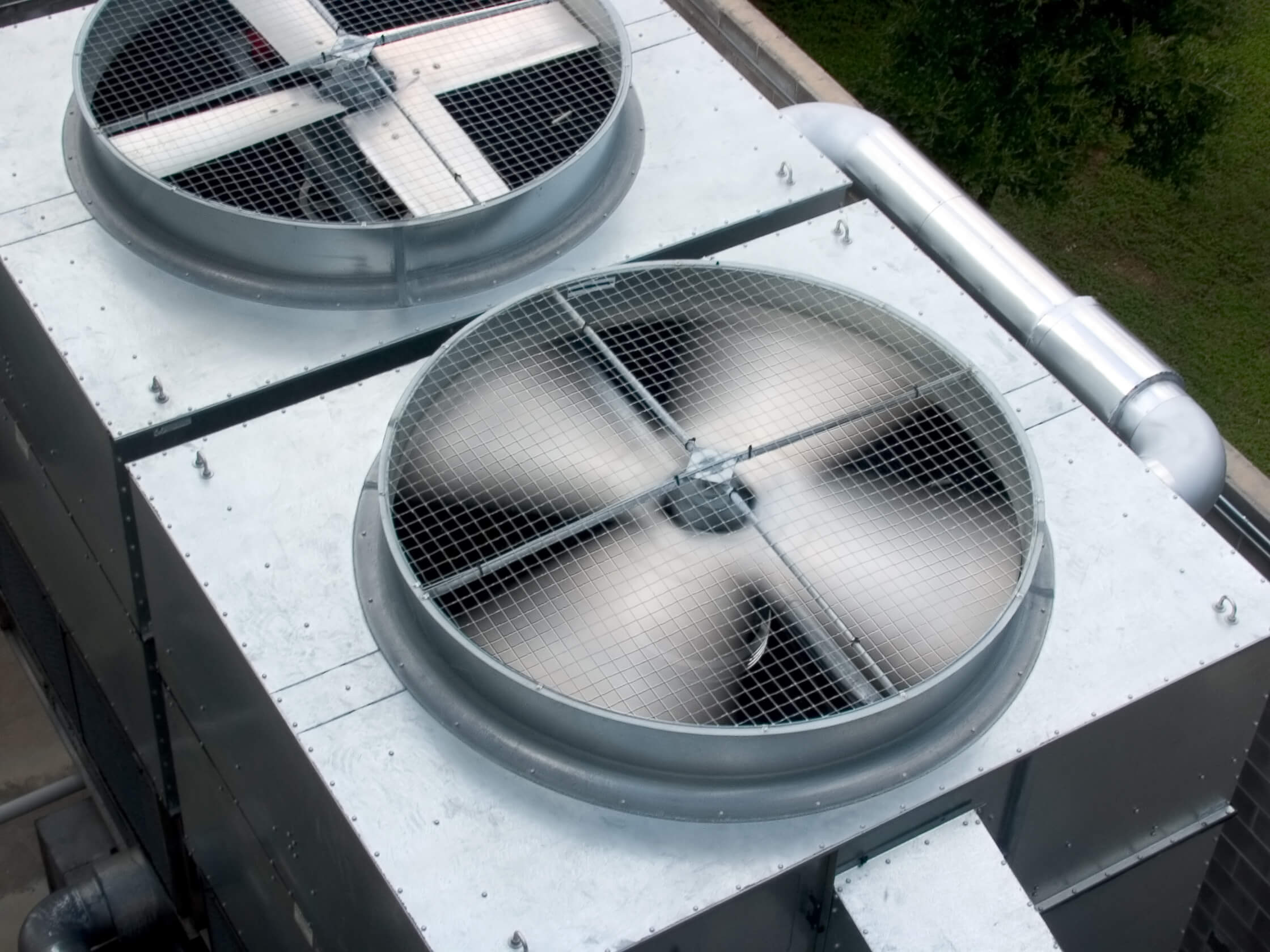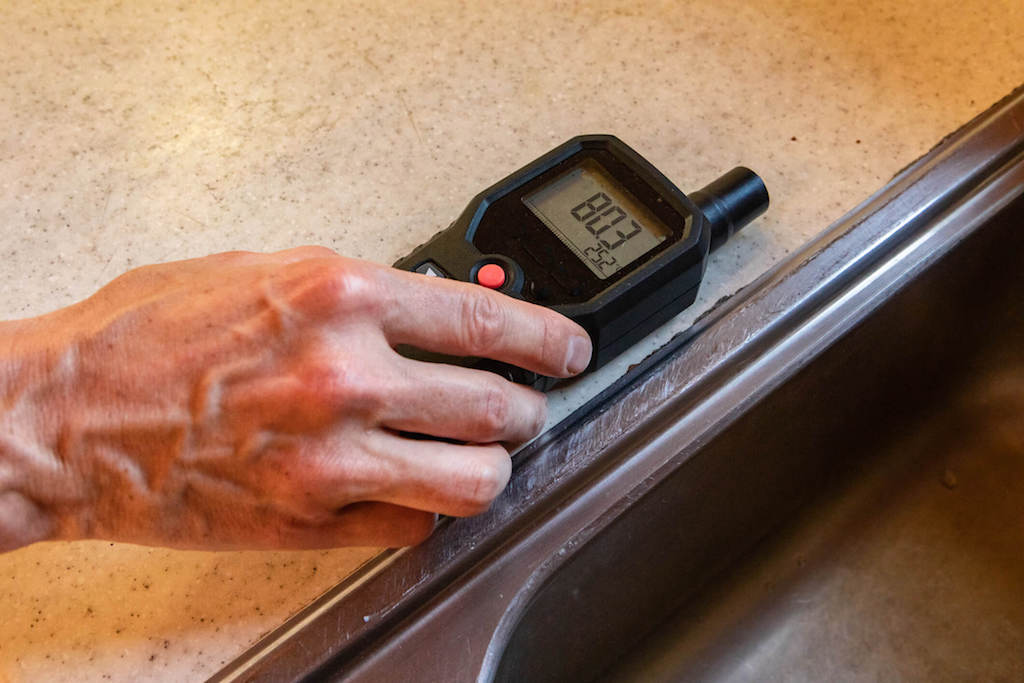Indoor air quality in restaurants is an area of interest many of us are beginning to pay more and more attention to as the months of the Covid-19 pandemic persist. Especially with the back and forth guidelines and reopenings occurring across the nation.
The recent focus on indoor air quality highlights an important and interesting fact: we as a society have largely neglected to consider the effect indoor air quality has on our health.

Consider this: a typical person breathes in on average 20,000 breathes a day. Now think about where you spend most of your time. You’re more than likely a frequent flyer inside places such as an office building, your home, or a restaurant. The keyword here is inside. While we’ve heard of outdoor air pollution and the importance of keeping that air clean (which absolutely is important), we rarely consider the quality of the air we breathe in most.
For places with a revolving door to the public, like restaurants, the need for air quality awareness is that much greater. Between the volume of people coming in and out, the constant movement and preparation of food products, unavoidable spills, kitchen disasters, and incessant moisture opportunities, restaurants are prime locations for poor air quality. Particles are constantly being dispersed into the indoor space.
It’s not just Covid-19 virus particles in the air we should be worried about, though. A long list of particles can be found in a restaurant’s air, from mold spores and bacteria to gases and microscopic toxins.¹ Without consideration and preemptive actions to filter them out, these particles can cause a range of health effects in exposed individuals. That’s not quite the experience many are looking to have while dining out.
Particulate Matter
There is a number of particulates in the air at any given time. It’s unavoidable. The issue begins when the air is so polluted with these molecules that it begins affecting an individual’s health.²
By definition, particulate matter (also commonly referred to as particle pollution or PM) “is a complex mixture of extremely small particles and liquid droplets.”³ These tiny particles include all kinds of compounds ranging from dust and organic matter (like mold spores) to acids and liquid.
The distinctive quality of particulate matter particles is their small size, which allows them to be inhaled. There are two categories for particulate matter.

PM₁₀: particles with diameters that are generally 10 micrometers or smaller
PM₂.₅: fine particles with diameters that are generally 2.5 micrometers or smaller
To put it into a perspective, a single strand of hair is around 100 micrometers in diameter.⁴ Keep in mind, you can visibly see a strand of hair (even if some of us have to squint or throw on a pair of glasses). In comparison, a single bacteria cell can be as small as 1 micrometer in diameter. That means you’d have to line up 100 bacteria cells to equal the size of a single strand of hair.
That’s not even the smallest particle example. Other particles like the Covid-19 virus are only 0.1 micrometers, which means they’re roughly 100 times smaller than a strand of hair.⁵
That’s pretty tiny!
Indoor Air Quality in Restaurants and Health
Particulate matter’s small size not only makes them easily inhalable but also allows exposure to occur relatively unnoticed (initially at least) because an individual can’t see them as they’re breathing in. Researchers are still hard at work studying the effect particulate matter exposure has on health.⁶

Obviously, exposure to bacteria and viruses can cause health issues, but what about particles like mold spores?⁷ Between aspects like the type of particles, any preexisting conditions, and exposure time, it’s a tricky subject to nail down.
The consensus, though, is that breathing in a large number of foreign particles can cause serious health problems. Especially in those with weakened or developing immune systems.⁸ Even short-term exposure can cause these adverse reactions to pop up.
Symptoms of particulate matter exposure can include:
Every person’s experience with exposure is different. That’s why it’s so important to create clean, safe air inside of heavily-trafficked areas like restaurants.
Indoor Air Quality in Restaurants
There are quite a few steps restaurants can take to improve their indoor air quality and keep their clientele and staff safe. Keep in mind, most buildings weren’t built with air quality as the main priority. That’s why it’s necessary to take additional measures to create a cleaner environment.
So, whether you’re a restaurant owner interested in creating a healthier space or a restaurant lover wanting to ensure your favorite food spot is safe, here are some things to consider when it comes to creating better indoor air quality.
Ventilation
The HVAC system can be a restaurant air quality champion or worst nightmare. It all depends on if it’s the right fit and if it’s maintained properly.⁹
These systems don’t just help regulate the temperature inside. They also help circulate indoor air, regulate humidity levels, and filter out particulate matter. All of which are incredibly important in creating cleaner air. Maintaining lower humidity, for instance, helps prevent mold growth opportunities for the entire area.
HVAC systems are pretty much the first line of defense when it comes to indoor air quality.

There are a few details to consider when determining if an HVAC system is functioning properly for a restaurant. Is it the appropriate size, does it distribute air properly for that specific building, what filters are being used, and is it set up so as to avoid mold growth?
The answers to these questions will determine if the indoor air quality in restaurants is actively being improved or if the air is being improperly distributed, filtered, or filled with things like mold spores.
To ensure their HVAC system is fighting the clean air fight, restaurants should make sure they have the right system for the space and maintain a constant awareness of how it’s functioning. That includes regular maintenance, hire a professional to inspect the system throughout the year to make sure it’s operating properly, and using filters that can properly filter out as many particulates as possible. Remember, particles in the air can be as small as 0.1 micrometers which means the filters used need to be equipped to catch and retain them.
Checking the air ducts and vents is another way to ensure that the air is being circulated properly and cleanly throughout the building. Plus, a healthy air system can also save energy costs which is a win-win situation!
Air Purifiers
While maintaining a healthy HVAC is a great first step towards creating better indoor air in restaurants, it’s not the only aspect to consider. Investing in air purifiers creates another level of air filtration, which helps further protect guests as they enjoy their dining experience.
There are a huge number of air purifiers out there to choose from, but not all brands are created equal. When searching for a purifier, the best ones are those that filter out as small of particles as possible, including viruses, bacteria, and mold. And they shouldn’t just “sometimes” filter out these small particles. They should always pull them from the air.
From my personal experience, Intellipure offers some of the best air purifiers in the industry. Their patented DFS technology removes up to 99.99% of airborne particles down to 0.007 microns. That’s pretty impressive!
Keep in mind as well that every air purifying device is specified for particular sized areas. Intellipure, for instance, manufactured a compact air purifier for 500 sq. ft. areas as well as a commercial air purifier for 3,500 sqft areas. It all depends on the size of the space and how much additional filtration restaurants are wanting to offer. A potential option would be installing the commercial purifier for the entire building as well as compact purifiers in each room or near a certain amount of tables.
These machines provide additional defense to helping to create better indoor air quality in restaurants so everyone can breathe in clean air and have peace of mind.
Cleaning
Not all restaurants are known to be pillars of cleanliness but they should! Cleaning not only keeps everything safe and sanitized for guests but also helps improve indoor air quality in restaurants.

It’s not just the air and air ducts that need cleaning, though. Maintaining a clean restaurant, in general, can help decrease the number of particles in the air. This process includes regularly and thoroughly wiping down all surfaces, HEPA vacuuming carpets, sweeping and mopping kitchen floors, and deep-cleaning appliances. By actively working to decrease the amount of dust, bacteria, and viruses from surfaces, restaurants can help prevent these particles from getting dispersed into the air.
Another great step to help promote healthy indoor air quality in restaurants is to wipe up any liquids and decrease the level of moisture in the building as much as possible. Mold spores only need 24-48 hours to grow, if provided a damp surface.¹⁰ Once mold begins to grow, it releases more and more spores into the air, drastically affecting the air quality.¹¹ Not to mention, many mold species can create microscopic toxins, called mycotoxins, which they also release into the air.¹² Once one area of mold growth begins, it’s incredibly easy for another to pop up elsewhere. Reducing these wet opportunities prevents mold growth and helps avoid any adverse health reactions to exposure.¹³
Also, keep in mind that not all contaminants can be cleaned in the same way. Mycotoxins, for example, require multiple wipe-downs to completely remove from a surface. Staying up to date on disinfecting techniques, as well as EPA-approved products, can help ensure surfaces are clean and any potential contaminants are removed.
Air Quality Inspection
Unexpected events or problems are pretty much the restaurant industry’s M.O. Employing an indoor environmental professional (IEP) to come in and assess the air quality about once a year can provide a snapshot of the air inside the building and highlight any gaps or areas of improvement. That way, issues can be addressed quickly, before they become a bigger problem.
That being said, finding the right IEP can be tricky. This individual should understand how important these measurements are to ensure the continued health of anyone in the building. The analysis itself should be comprehensive, cover the entire building, and take several hours.
Data the restaurant should expect to see are:
- Carbon monoxide
- Particulate matter
- VOCs
- Humidity
- Formaldehyde
- Radon
- Types and quantities of molds present
- Potential spore presence in the HVAC system
- Presence of mycotoxins (a harmful toxin produced by molds)
- Presence of bacteria

Yearly inspections will provide a constant picture of the state of indoor air quality in a restaurant so that anyone inside the building can have peace of mind that they’re breathing clean air. Otherwise, any number of microscopic particles could be floating through the air at any time and cause adverse health effects to those exposed.
These inspections will come at a cost, but it’s worth ensuring that the restaurant is safe.
Creating a Safe Dining Experience For All
These are just a few areas of interests restaurants can focus on to tackle better indoor air quality, but there are plenty of others. Rome wasn’t built in a day though! The first step towards creating a solid foundation for better air quality in restaurants is to just get started on one project at a time.
By actively working on creating a safe environment, restaurants guests will be able to rest assured that their health is in good hands. Then, they can focus on what really matters while they’re there: enjoying their dining experience. Covid-19 may have been the catalyst for beginning to consider air quality, but it’s been a long time coming. Everyone deserves to breathe clean, healthy air. Even while eating out!
- Baek, S. O., Kim, Y. S., & Perry, R. (1997). Indoor air quality in homes, offices and restaurants in Korean urban areas—indoor/outdoor relationships. Atmospheric Environment, 31(4), 529-544.
U.S. Consumer Product Safety Commission. (n.d.). The inside story: A guide to indoor air quality. U.S. Consumer Product Safety Commission. Retrieved October 4, 2021, from https://www.cpsc.gov/Safety-Education/Safety-Guides/Home/The-Inside-Story-A-Guide-to-Indoor-Air-Quality.
- Schwarze, P. E., Øvrevik, J., Låg, M., Refsnes, M., Nafstad, P., Hetland, R. B., & Dybing, E. (2006). Particulate matter properties and health effects: consistency of epidemiological and toxicological studies. Human & experimental toxicology, 25(10), 559-579.
- Environmental Protection Agency. (n.d.). Particulate Matter (PM) Basics. EPA. Retrieved October 4, 2021, from https://www.epa.gov/pm-pollution/particulate-matter-pm-basics.
- Maniloff, J. (1997). Nannobacteria: size limits and evidence. Science, 276(5320), 1773-1776.
- Maryanti, R. I. N. A., Hufad, A. C. H. M. A. D., Sunardi, S., Nandiyanto, A. B. D., & Al-Obaidi, A. S. M. (2020). Understanding covid-19 particle contagion through aerosol droplets for students with special needs. Journal of Engineering Science and Technology, 15(3), 1909-1920.
- Rohr, A. C., & Wyzga, R. E. (2012). Attributing health effects to individual particulate matter constituents. Atmospheric Environment, 62, 130-152.
- Kim, K. H., Kabir, E., & Kabir, S. (2015). A review on the human health impact of airborne particulate matter. Environment international, 74, 136-143.
- Bush, R. K., Portnoy, J. M., Saxon, A., Terr, A. I., & Wood, R. A. (2006). The medical effects of mold exposure. Journal of Allergy and Clinical Immunology, 117(2), 326-333.
- Sacks, J. D., Stanek, L. W., Luben, T. J., Johns, D. O., Buckley, B. J., Brown, J. S., & Ross, M. (2011). Particulate matter–induced health effects: who is susceptible?. Environmental health perspectives, 119(4), 446-454.
- Bearg, D. W. (2019). Indoor air quality and HVAC systems. Routle.
- Environmental Protection Agency. (n.d.). Mold. EPA. Retrieved August 17, 2021, from https://www.epa.gov/mold.
- Centers for Disease Control and Prevention. (2020, August 11). Basic facts about mold and dampness. Centers for Disease Control and Prevention. Retrieved August 17, 2021, from https://www.cdc.gov/mold/faqs.htm.
- World Health Organization. (n.d.). Mycotoxins. World Health Organization. Retrieved August 26, 2021, from https://www.who.int/news-room/fact-sheets/detail/mycotoxins.
- Curtis, L., Lieberman, A., Stark, M., Rea, W., & Vetter, M. (2004). Adverse health effects of indoor molds. Journal of Nutritional & Environmental Medicine, 14(3), 261-274.

